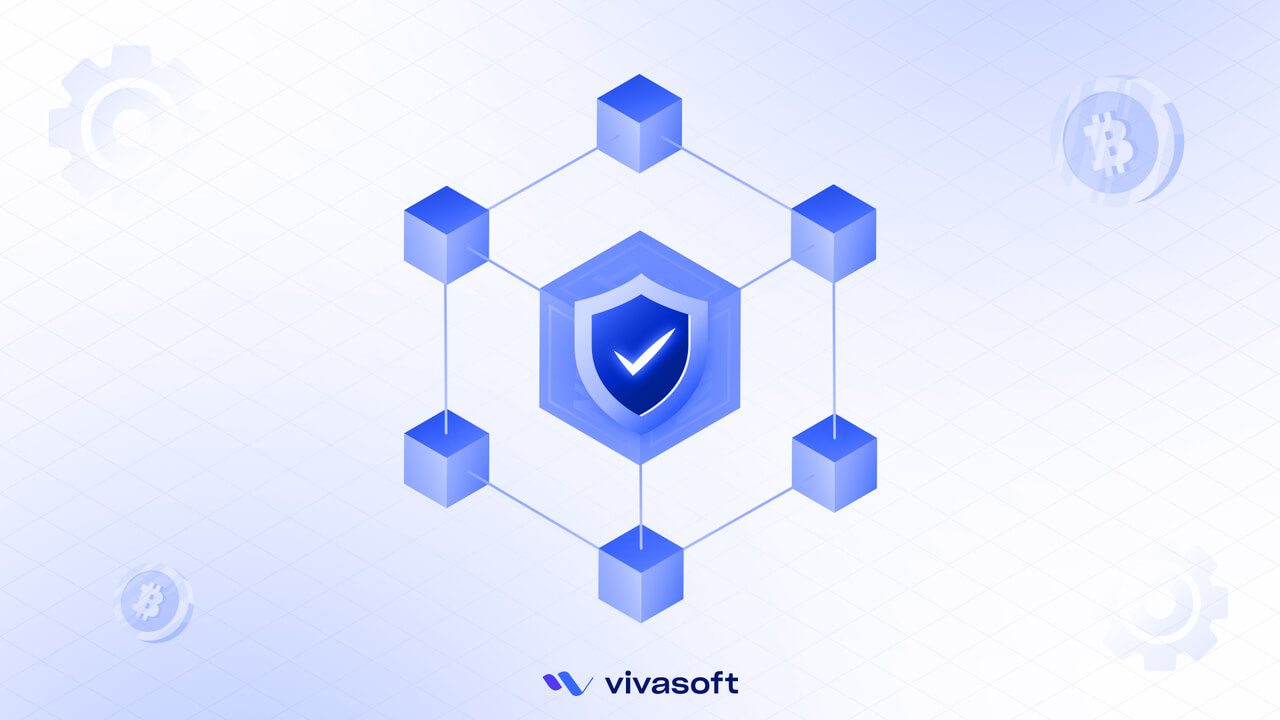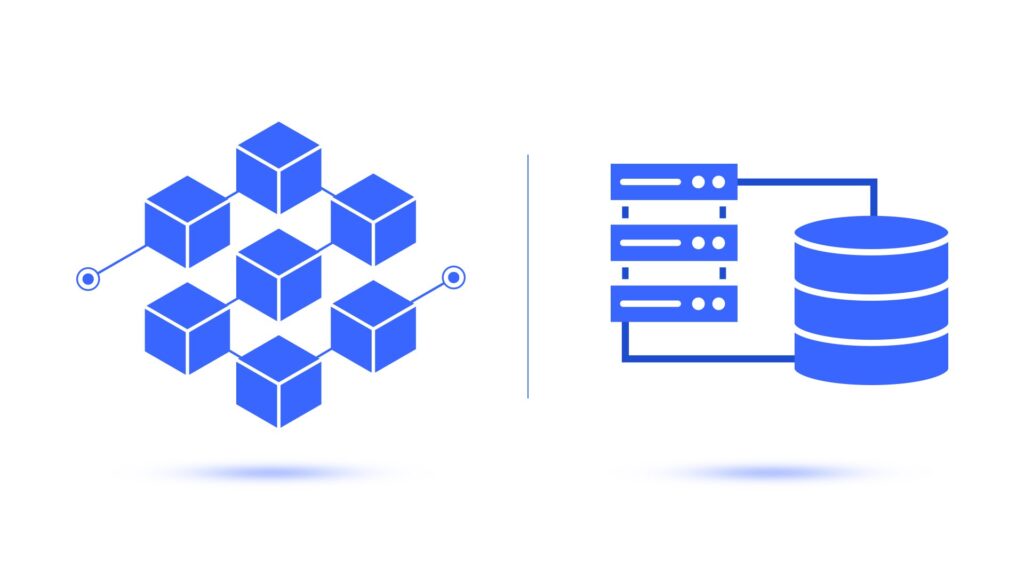Data breaches, identity theft, and unauthorized access are major concerns in today’s online world. It is very important to keep our private and digital footprints safe. This includes individuals and corporations who manage large amounts of sensitive data. Blockchain appears as a potential solution to these concerns.
So, how does blockchain support data privacy? Blockchain is a decentralized, tamper-resistant database which records transactions among computers. This technology is distributed, therefore no central authority is needed. This makes it resistant to hacking and fraud.
In this blog, we will go deeper into the security measures of blockchain. We will explore how blockchain uses cryptographic techniques and decentralized consensus mechanisms to protect data.
Understanding the Basics: Blockchain Fundamentals

Blockchain is a decentralized and distributed digital ledger technology. This ledger consists of a chain of blocks, each containing a list of transactions. The unique structure of blockchain assures transparency, security, and immutability.
Blockchain is often referred to as a type of distributed ledger technology (DLT). DLT means systems that record, share, and synchronize data across multiple entities. Blockchain stands out as a specific implementation of DLT.
The Role of Cryptography in Blockchain Security
Blockchain cryptography uses powerful mathematical algorithms to encrypt and decode data. There are two main types of cryptographic keys: public keys and private keys. The public key is openly shared. It acts as an address to which others can send information. The private key, on the other hand, is kept secret. It is used to decrypt the information received with the corresponding public key. Asymmetrical encryption makes deciphering information without the private key practically impossible, even if the public key is known.
Illustration of Cryptographic Hash Functions for Data Integrity
Blockchain implements cryptographic hash functions, another important cryptography application. In blockchain, each block contains a cryptographic hash of the previous block. This linkage creates a chain of blocks that is resistant to tampering. If even a single bit of information in a block is altered, the hash of that block changes completely. This disrupts the entire chain. So, after adding a block to the blockchain, changing its contents is computationally impossible.
Decentralization: A Game-Changer for Data Privacy
Decentralization in blockchain means sharing control and authority among participants. In centralized systems a single entity or authority holds sway. But blockchain is a peer-to-peer network where each participant (or node) has equal say in consensus.
There is no single point of failure in a decentralized blockchain network. Decentralization reduces the risk of a catastrophic breach impacting the entire system.
Comparison with Centralized Systems and Their Vulnerabilities:
| Aspect | Centralized Systems | Decentralized Systems |
|---|---|---|
| Control | Centralized authority has control over data. | Distributed control across a network of participants. |
| Single Point of Failure | Vulnerable to a single point of failure. | Resilient to single points of failure. |
| Security | Prone to large-scale data breaches and attacks. | Enhanced security through distributed architecture. |
| Transparency | Limited transparency, as data control is centralized. | High transparency with equal visibility for all nodes. |
| Trust | Relies on trust in a central authority. | Trust is distributed across the network. |
Power of Decentralization in Data Protection
The power of decentralization is vividly illustrated in real-world applications. Here are some of them:
- Bitcoin – Decentralized Digital Currency: Bitcoin operates on a decentralized network using blockchain technology. Transactions are verified by nodes on the network through a process known as mining. It eliminates the need for a central authority like a bank.
- Filecoin – Decentralized Cloud Storage: Filecoin uses decentralized storage networks to transform traditional cloud storage paradigms. Users can rent out unused storage space on Filecoin securely and decentralized.
- Ethereum – Decentralized Smart Contracts: Ethereum extends decentralization to smart contracts. It’s like self-executing contracts with the terms of the agreement directly written into code. With this (DeFi) platforms and non-fungible token (NFT) marketplaces can operate without intermediaries.
Consensus Algorithms: Ensuring Trust in the System
Consensus algorithms avoid problems like double-spending by agreeing on the order of transactions. They ensure that only valid transactions are added to the blockchain.
Consensus methods are strong enough to protect against malicious attacks. For instance, in a Proof-of-Work (PoW) system, participants must solve complex mathematical problems to add a block to the chain. This process requires a considerable amount of computational power. This makes it economically infeasible for an attacker to compromise the network.
Popular Consensus Mechanisms and Their Impact on Privacy
- How it Works: Nodes, known as miners, compete to solve complex mathematical problems to add a block to the blockchain.
- Impact on Privacy: PoW is renowned for its security. Its energy-intensive nature has led to concerns about environmental sustainability. Privacy in PoW networks is maintained through the pseudonymous nature of participants.
- How it Works: Validators are chosen to create new blocks. They are chosen based on the amount of cryptocurrency they hold and are willing to “stake” as collateral.
- Impact on Privacy: PoS reduces the environmental impact compared to PoW. Also, the consensus process is generally faster. Privacy is maintained by keeping the identity of validators pseudonymous.
Smart Contracts: Automating Privacy Controls

A smart contract is a self-executing contract with the terms of the agreement directly written into code. Blockchain networks automatically enforce and execute these contracts without intermediaries.
How Smart Contracts Enforce Privacy Controls?
Here are some use cases demonstrating how smart contracts enforce privacy controls:
- Supply Chain Management: Smart contracts implement rules for product origin tracking and quality inspections. Smart contracts can automatically release payment once a shipment is verified and received.
- Insurance Claims Processing: The smart contract starts the claims procedure when predetermined circumstances, such as a loss, are met. This speeds up settlement, keeps private information safe and assures only valid claims are processed.
- Tokenized Assets and Financial Agreements: In tokenized asset transfers, the smart contract secures and follows predetermined regulations. In financial agreements, the terms of loans or investments are encoded into smart contracts. This automates processes and minimizes the need for intermediaries, thus enhancing privacy.
Permissioned Blockchain: Balancing Privacy and Accessibility
Permissioned blockchain networks allow only those who have been granted permission to join. Besides participation, permissioned blockchains allow data read and write access. This control lets companies customize blockchain networks to privacy, security, and regulatory needs.
Advantages of Permissioned Blockchains in Certain Use Cases
- Restricts access to known entities. It ensures sensitive information remains shielded.
- Particularly beneficial in industries such as finance, healthcare, and supply chain management.
- Higher transaction throughput compared to public blockchains.
- Ideal for scenarios with a high volume of transactions.
- Provides a structured environment aligning with specific regulatory requirements.
- Allows for easier adherence to industry-specific compliance standards.
Real-World Applications Where Permissioned Blockchains Excel in Data Privacy:
- Trade Finance: Permissioned blockchains simplify and secure transactions between banks, shipping businesses, and customs authorities.
- Healthcare Data Management: In healthcare, permissioned blockchains provide secure patient record sharing among authorized providers.
- Supply Chain Traceability: Supply chain companies track products from manufacturer to consumer using permissioned blockchains.
Encryption: Safeguarding Information on the Blockchain

The blockchain uses many encryption methods to protect privacy, integrity, and validity. It is a process that transforms plain, readable data into a coded form.
One prominent encryption method is Asymmetric Cryptography. As said earlier, here each participant has a pair of keys. A public key for encryption and a private key for decryption. Another technique is Hash Functions. It creates a unique, fixed-size hash value for any given set of data.
Role of Encryption in Protecting Sensitive Data
In a decentralized network like the blockchain, trust is distributed. And the participants may be anonymous. Here, encryption becomes a linchpin in making a secure and trustworthy environment. Here is how encryption plays its role in protecting sensitive data:
- Confidentiality: By encrypting data, confidential information remains private. And it is accessible only to those with the proper decryption keys. This is crucial in scenarios like personal identification details or financial transactions.
- Integrity: The unique hash value generated for each block is a cryptographic fingerprint. This makes it practically impossible to alter the data within a block without detection.
- Authentication: Asymmetric cryptography contributes to user authentication. Private key-generated digital signatures verify transaction origins and data validity.
Best Practices for Implementing Encryption in Blockchain Applications
Key Management
Implement strong key management practices to safeguard private keys. Consider using Hardware Security Modules (HSMs) for added security.
End-to-End Encryption
Apply end-to-end encryption to protect data throughout its journey. This applies from creation to storage and transmission. It keeps data indecipherable without the proper keys even if a breach happens.
Regular Updates
Keep up with changes in encryption algorithms. Make sure your keys are always up to date. It’s important to stay ahead of possible security holes to secure the blockchain environment.
Open Source Auditing
Utilize open source encryption libraries. Subject them to regular audits by the community.
Authentication and Authorization: Gatekeepers of Data Access
Authentication validates the identity of participants. And authorization defines the scope of their access and actions within the blockchain network. Each participant’s actions are tied to their unique digital signature.
Blockchain systems commonly use role-based access control (RBAC) or attribute-based access control (ABAC) to manage authorization. RBAC assigns specific roles to participants. And each role has a predefined set of permissions. In contrast, ABAC considers various attributes of the participant to make access decisions.
Case Studies Illustrating the Impact of Secure Authentication and Authorization on Data Privacy
Estonian E-Government and X-Road Platform:
- Implementation Year: X-Road was launched in 2001.
- Digital ID Adoption: Over 2 million Estonian residents use digital IDs.
For safe authentication, citizens receive digital ID cards with public-private key pairs. RBAC is employed to grant access rights based on roles. So only people who are allowed to can see certain datasets.
Impact: Estonia’s e-government infrastructure’s secure authentication and authorization have improved citizen services and protected sensitive data. This has resulted in a significant reduction in bureaucratic inefficiencies.
Health Information Exchange (HIE) Networks:
Emergence of HIE Networks: HIE networks gained prominence in the mid-2000s.
Network Participants: Over 100 HIE networks operate in the United States alone.
Secure methods, such as two-factor authentication, are used to verify the identities of participants. This includes health care providers and organizations. RBAC restricts patient data and sensitive health information to authorized personnel.
Impact: In HIE networks, secure authentication and authorization improve patient data privacy. The results are better patient outcomes, better care coordination, and fewer medical errors.
Anonymity on the Blockchain: Protecting User Identities

Risks and Challenges Associated with Anonymity
Illicit Activities (Risk): The privacy afforded by blockchain can be exploited for illicit activities. This includes money laundering and illegal transactions.
Regulatory Compliance (Challenge): Meeting regulatory requirements becomes challenging when user identities are shielded. Especially in industries like finance and healthcare.
Loss of Accountability (Challenge): It might be difficult to hold users responsible when they are completely anonymous.
Strategies for Maintaining a Balance between Privacy and Accountability
- Implement identity verification for specific transactions to meet regulatory standards.
- Balance anonymity with transparency by designing systems for auditable interactions.
- Provide users with knowledge about the implications of blockchain anonymity.
- Let users selectively disclose information. Maintain a balance between privacy and accountability.
- Implement mechanisms which allow users to dynamically manage their consent levels.
- Coordinate with regulators to align blockchain practices with legal and ethical standards.
Ensuring Data Integrity in a Peer-to-Peer Environment
Unlike traditional centralized systems, blockchain uses a P2P architecture. Here nodes in the network interact directly with each other. Thus, it forms a distributed and interconnected network. Each node maintains its copy of the blockchain.
The integrity of data in a P2P network is protected by decentralized validation. Each node separately checks and approves transactions. Peer-to-peer design helps make the ledger immutable. It’s nearly impossible to change a blockchain block after peer validation.
Real-World Examples Showcasing the Reliability of Peer-to-Peer Communication
- Case Study: The Bitcoin network operates on a P2P architecture. Here nodes, known as miners. They validate and add transactions to the blockchain through proof-of-work (consensus mechanism).
- Reliability: The Bitcoin network has demonstrated the reliability of P2P communication. It has maintained the integrity of its transaction history since its inception in 2009.
- Case Study: Ethereum, a decentralized platform for smart contracts. It also operates on a P2P network. Nodes execute smart contracts. They ensure the integrity and execution of decentralized applications (DApps).
- Reliability: Ethereum’s secure and tamper-resistant smart contract execution shows P2P communication’s reliability.
- Case Study: IPFS is a distributed P2P file system. It allows users to share and access content without relying on a central server.
- Reliability: IPFS shows that peer-to-peer (P2P) transmission is reliable for sharing files. Content is distributed across multiple nodes by assuring data availability and integrity.
Trustworthy Computing: Building Confidence in the System

Trustworthy computing in blockchain involves establishing accurate, secure, and transparent systems. It guarantees that blockchain ecosystem data and transactions are authentic and free from manipulation.
Practical Tips for Users to Verify the Trustworthiness of Blockchain Platforms
- Understand and verify the consensus mechanism employed by the blockchain platform.
- Familiarize yourself with how transactions are validated.
- Investigate how the blockchain platform ensures immutability.
- Look for evidence of a strong hashing algorithm and data storage practices.
- Evaluate the degree of decentralization within the blockchain network.
- Confirm the transparency features of the blockchain.
- Look for evidence of security audits conducted by reputable third-party organizations.
- Gain insights into the governance structure of the blockchain platform.
- Make sure the blockchain platform has strong smart contract security.
Conclusion
The blockchain technology is a light of hope for protecting data privacy. It revolutionizes data security with its decentralized structure, transparency, and immutability. Beyond cryptocurrencies, blockchain promises a revolution in protecting digital assets. Blockchain adoption is essential in this difficult digital age. Use blockchain for data privacy, see its disruptive power, and imagine a future where privacy is strengthened.
FAQs
How can blockchain technology best help securing identity data?
Blockchain uses cryptographic techniques to secure personal data. Decentralization reduces data breaches by preventing unauthorized access.
How blockchain technologies can secure transactions and information systems?
Blockchain secures transactions by using cryptographic methods and decentralized consensus. It employs cryptographic techniques like digital signatures and hashing. These methods reduce DDoS attackers’ ability to send harmful traffic or modify data.
Can data privacy be achieved in blockchain?
Yes, blockchain provides a strong foundation for data privacy through encryption, decentralization, and immutable record-keeping. Decentralized control and cryptography reduce data storage risks. It allows users to control their own information.
How does blockchain prevent data breaches?
The cryptographic methods in blockchain secure data. Decentralization reduces vulnerabilities associated with a single point of control. And immutability ensures tamper-resistant records.
What is an example of a privacy blockchain?
Examples of privacy-focused blockchains are Monero and Zcash. Monero uses advanced cryptographic techniques like ring signatures and stealth addresses. Zcash uses zero-knowledge proofs, specifically zk-SNARKs (Zero-Knowledge Succinct Non-Interactive Arguments of Knowledge) for private transactions.
What is private data in blockchain?
Private data on blockchain is encrypted or insulated, preventing all members from accessing it. Only authorized parties with the decryption keys can access this encrypted content.














